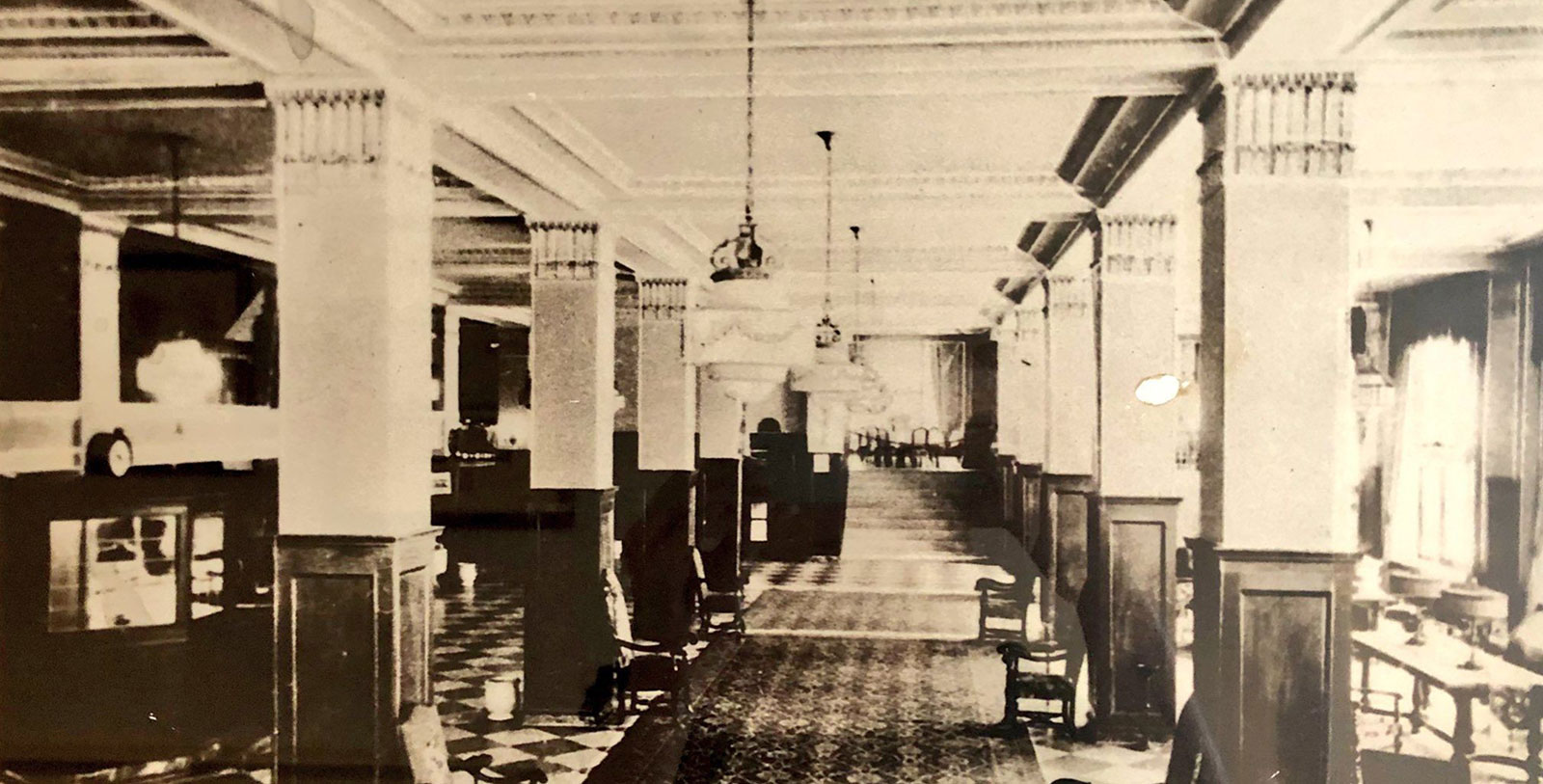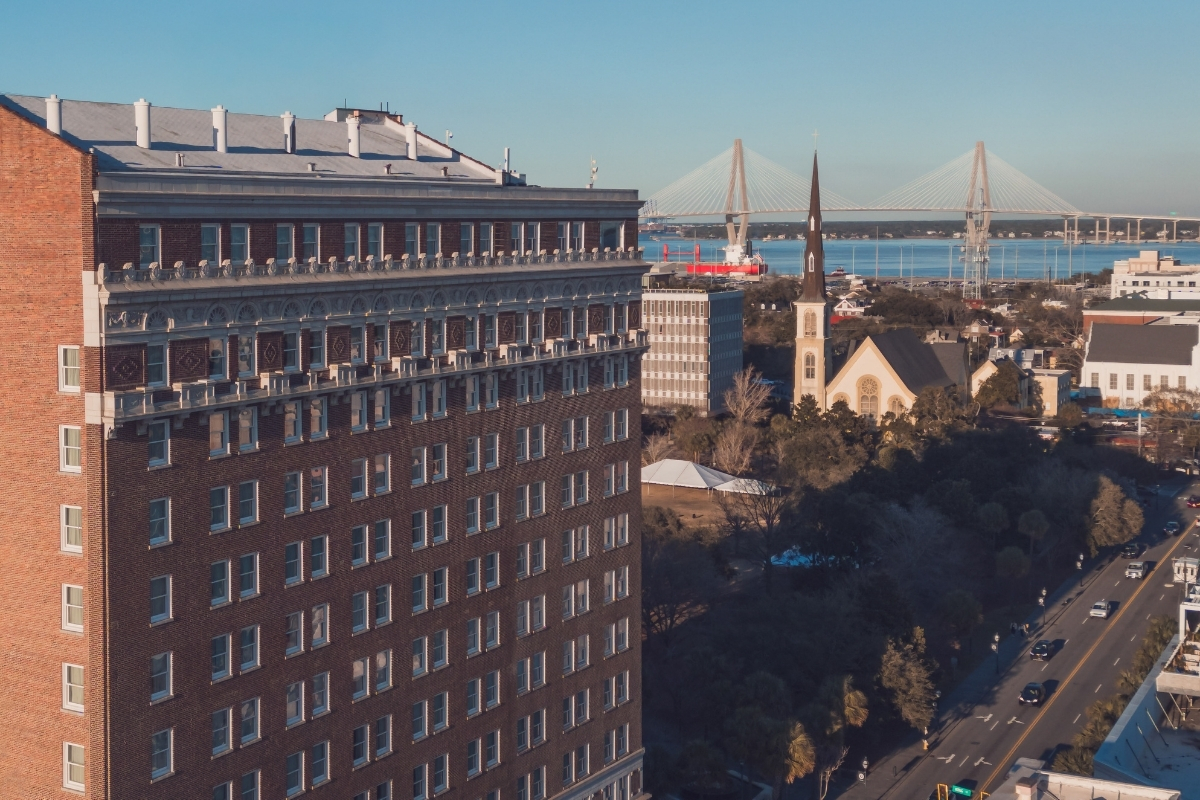Receive for Free - Discover & Explore eNewsletter monthly with advance notice of special offers, packages, and insider savings from 10% - 30% off Best Available Rates at selected hotels.
francis marion hotel history
Learn about Francis Marion Hotel's history, which is named for the Revolutionary War hero Francis Marion, also known as the "Swamp Fox.” Explore the deep historical roots of Francis Marion, pieced together by the National Trust for Historic Preservation for this historic hotel.
Francis Marion Hotel, a member of Historic Hotels of America since 1999, dates back to 1924.
VIEW TIMELINEA member of Historic Hotels of America since 1999, the Francis Marion Hotel has served as one of Charleston’s most exclusive destinations since the Roaring Twenties. At the time of the hotel’s debut, the city was in the midst of the celebrated “Charleston Renaissance.” Countless artists, authors, and other intellectuals flooded into the area, inspired by the metropolis’ rich historical character. Art depicting Charleston’s intrinsic beauty proliferated, while various literary works appeared that highlighted its charm. Amid the great changes, the city’s former mayor, T.T. Hyde, decided to open his own beautiful boutique hotel. He then formed his own ownership group to spearhead the financing of the project called the “Marion Square Realty Co.” The company soon selected a plot of land in the city’s historic downtown district and hired architect William Lee Stoddart to create its brilliant design. The project was extensive, taking several months and a staggering $1.5 million to complete. Nevertheless, Stoddard had managed to craft a beautiful 13-story, steel frame structure that displayed a stunning array of Beaux-Arts-style architecture. It even stood as the tallest structure in all of Charleston when the construction finished in 1924.
T.T. Hyde chose to christen his new luxurious business as the “Francis Marion Hotel” after native South Carolinian and legendary American Revolutionary War hero, Francis Marion. (Marion’s legacy in Charleston is still highly regarded, with many locals remembering him by his moniker, the “Swamp Fox.”) Word of the Francis Marion Hotel magnificence quickly spread throughout both South Carolina and the rest of the country in just a short amount of time. By the end of the decade, Hyde’s wonderful hotel had cemented itself as one of Charleston’s best vacation retreats. Its popularity remained strong for decades thereafter, too, despite a change in ownership to the Jack Tar Hotels Corporation. A few of the nation’s most historical figures even stayed at the hotel, including the famous four-star general Mark W. Clark. In fact, the prosperity of the Francis Marion Hotel was so great that the Jack Tar Hotel Corporation had to hire architect Augustus Constantine to thoroughly renovate the building. Constantine drew up a set of brilliant blueprints that added on a fantastic dining establishment that the company later named the “Swamp Fox Room.”
But the Francis Marion Hotel evenutally entered into a prolonged period of decline that resulted in Jack Tar Hotels selling the site to Hospitality Associates of Charleston in 1984. The hotel’s prospects continued to slide in spite of efforts by the new owners to keep the business afloat. Indeed, the Hospitality Associates of Charleston tried everything, even having the Francis Marion Hotel operate as both a Ramada and Radisson for a while. Thankfully, salvation arrived when hotelier P. Steven Dopp and his company, Portwood Properties, purchased the Francis Marion Hotel during the mid-1990s. Determined to restore the building back to its former glory, Dopp and his colleagues managed to secure a $12 million grant from the National Trust for Historic Preservation in 1996. Work on the Francis Marion Hotel commenced immediately thereafter and restored practically every aspect of the building, from its public spaces to the luxurious accommodations. As such, the Francis Marion Hotel quickly reestablished itself as one of Charleston’s most exclusive vacation retreats once the renovations were done—a title that the business still holds to this very day. P. Steven Dopps still guides the Francis Marion Hotel, ensuring that its grand prestige never again fades. His continued commitment to the hotel has even earned him Historic Hotels of America’s “Lifetime Achievement Award in 2019. Thanks to the efforts of Steven Dopps, the Francis Marion Hotel remains among the best places to stay in Charleston today.
-
About the Location +
Named after King Charles II of England, Charleston is among the most historic cities in the whole United States. The first settlers to found the city arrived back in the mid-17th century, when the Lords Proprietors—the original officers for the unsettled Carolina territory—began moving colonists from Barbados and Bermuda to the area. Intent on creating a town as quickly as possible, the Lords Proprietors selected a number of sites around the confluence of the Ashley and Cooper rivers, before finally finding success at a place called “Oyster Point” in 1672. Despite intending to develop the settlement around a visionary plan known as the “Grand Model,” “Charles Towne”—as it was called then—was never incorporated until the American Revolution had ended. Instead, city officials passed local ordinances in the form of municipal laws that attempted to give some kind of legitimacy to the nascent community. Nevertheless, life in early Charleston was incredibly tough, as the town was beset by hostile groups of French, Spanish, and Native American armies. Pirates posed a serious problem, too, who raided the coastline frequently. In fact, Edward Teach—remembered today as “Blackbeard”—was among the pirates to harass Charleston regularly at the time. Furthermore, malaria and other tropical diseases took their toll on the English colonists, as did natural weather phenomenon like hurricanes.
Growth only picked up once immigrant populations from Europe began expanding westward into the South Carolina interior. Their arrival also saw the city’s economic fortunes change significantly, as it rapidly emerged as a commercial port for the outlying farms that surrounded Charleston. Rice, indigo, and other cash crops were common exports transported into Charleston’s natural harbor, which helped make the city one of the most prosperous in the Thirteen Colonies. But the new maritime commerce had a considerable dark side, for the transatlantic slave trade had also played a role in Charleston’s rebirth. By the eve of the American Revolution, nearly half of the city’s population—some 11,000 people—were either enslaved Africans or their descendants. Still, Charleston’s size and prosperity as a port made it one of the largest cities in British America, as well as the principal point of entry for any person—free or enslaved—entering into the South.
Charleston remained a busy port even as Great Britain continuously targeted the city throughout the American Revolutionary War. The city itself was eventually captured after British general Sir Henry Clinton successfully subjected it to a prolonged siege in 1780. Still, even greater economic prosperity awaited Charleston once Eli Whitney’s cotton gin made the cultivation of cotton an incredibly lucrative endeavor for local planters. Cotton soon became the primary staple crop shipped through Charleston Harbor right up to mid-19th century. But the number of slaves transported into the city increased dramatically, too. The local devotion to slavery made the city’s white residents committed to the concept of southern secession—an idea that became reality when South Carolina’s state legislature voted to secede following Abraham Lincoln’s first election in 1860. Charleston soon found itself at the middle of the American Civil War that followed, with the first shots of the conflict fired right within its own borders. Rebel militia under the command of P.G.T. Beauregard specifically bombarded the U.S. Army-occupied Fort Sumter shortly after Lincoln’s call for volunteers in April 1861. Four years of constant warfare came in the wake of the attack, which eventually destroyed much of Charleston and the rest of South Carolina.
Charleston struggled to emerge from the conflict, as industrialists and other entrepreneurs chose to move their operations elsewhere. But in the early 20th century, Charleston underwent a significant cultural renaissance that sought to highlight the positive aspects of the city’s history and culture. New art and literature appeared throughout Charleston, while many historic structures were preserved for the first time. Race relations also began to improve, with local African Americans gradually gaining access to more rights and liberties by mid-century. Charleston now rates among America’s most diverse communities, as well as one of its most culturally vibrant. People today love traveling to the city to experience its many interesting historic sites, such as Fort Sumter, the Historic Charleston City Market, and Magnolia Plantation and Gardens. But visitors also adore the wealth of historical architecture that calls Charleston home, giving it an incredibly gorgeous landscape. Many of those aesthetics—ranging from Greek Revival to Federal—reside within famous neighborhoods like the renowned Charleston Historic District. The Charleston Historic District was even designated a U.S. National Landmark by the U.S. Secretary of the Interior in 1966!
-
About the Architecture +
Amid the great changes of the historic Charleston Renaissance, the city’s former mayor, T.T. Hyde, decided to open his own beautiful boutique hotel. As such, he formed his own ownership group called the “Marion Square Realty Co,” which oversaw the financing of the project. The group soon selected a plot of land in the city’s historic downtown district and hired the great hotel architect William Lee Stoddart to create its brilliant design. The project was extensive, taking several months and a staggering $1.5 million to complete. Stoddard subsequently crafted a beautiful 13-story, steel frame structure that displayed some of the most outstanding Beaux-Arts-style architecture in the area. Beaux-Arts architecture, itself was one of the most common in America at the time, first emerging around the dawn of the 20th century. This beautiful architectural form originally began at an art school in Paris known as the École des Beaux-Arts during the 1830s. There was much resistance to the Neoclassism of the day among French artists, who yearned for the intellectual freedom to pursue less rigid design aesthetics. Four instructors in particular were responsible for establishing the movement: Joseph-Louis Duc, Félix Duban, Henri Labrouste, and Léon Vaudoyer. The training that these instructors created involved fusing architectural elements from several earlier styles, including Imperial Roman, Italian Renaissance, ad Baroque. As such, a typical building created with Beaux-Arts-inspired designs would feature a rusticated first story, followed by several more simplistic ones. A flat roof would then top the structure. Symmetry became the defining character, with every building’s layout featuring such elements like balustrades, pilasters, and cartouches. Sculptures and other carvings were commonplace throughout the design, too. Beaux-Arts only found a receptive audience in France and the United States though, as most other Western architects at the time gravitated toward British design principles.
-
Famous Historic Guests +
Mark W. Clark, general who is best remembered for leading the United States Fifth Army in Italy during World War II.































